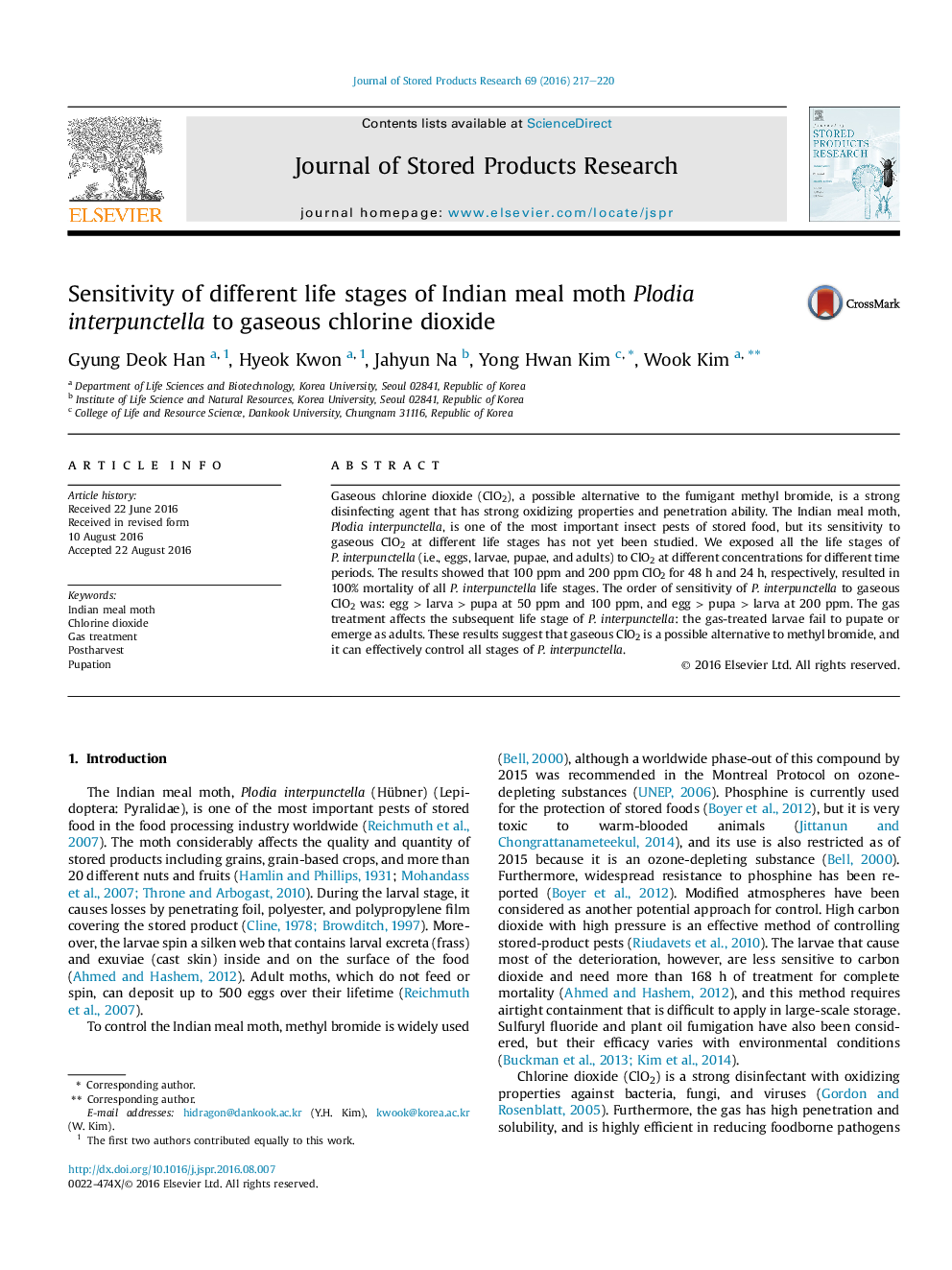| Article ID | Journal | Published Year | Pages | File Type |
|---|---|---|---|---|
| 6378355 | Journal of Stored Products Research | 2016 | 4 Pages |
Abstract
Gaseous chlorine dioxide (ClO2), a possible alternative to the fumigant methyl bromide, is a strong disinfecting agent that has strong oxidizing properties and penetration ability. The Indian meal moth, Plodia interpunctella, is one of the most important insect pests of stored food, but its sensitivity to gaseous ClO2 at different life stages has not yet been studied. We exposed all the life stages of P. interpunctella (i.e., eggs, larvae, pupae, and adults) to ClO2 at different concentrations for different time periods. The results showed that 100 ppm and 200 ppm ClO2 for 48 h and 24 h, respectively, resulted in 100% mortality of all P. interpunctella life stages. The order of sensitivity of P. interpunctella to gaseous ClO2 was: egg > larva > pupa at 50 ppm and 100 ppm, and egg > pupa > larva at 200 ppm. The gas treatment affects the subsequent life stage of P. interpunctella: the gas-treated larvae fail to pupate or emerge as adults. These results suggest that gaseous ClO2 is a possible alternative to methyl bromide, and it can effectively control all stages of P. interpunctella.
Related Topics
Life Sciences
Agricultural and Biological Sciences
Agronomy and Crop Science
Authors
Gyung Deok Han, Hyeok Kwon, Jahyun Na, Yong Hwan Kim, Wook Kim,
